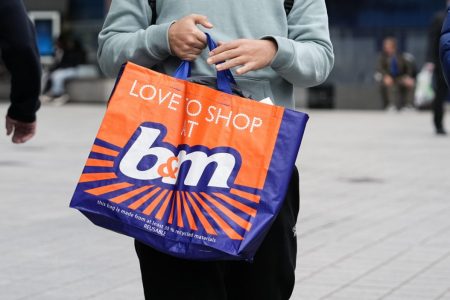Asda shoppers across the UK are reveling in a significant homeware sale, with prices slashed to remarkably low levels. Reports flooding social media platforms, particularly Facebook’s Extreme Couponing and Bargains group, showcase impressive finds. Decorative vases, originally priced at £10, have been spotted scanning for a mere £1, generating excitement and drawing comments like “gorgeous” and “What a bargain!” The sale extends beyond individual stores, with sightings of discounted items reported nationwide. Floating shelves, typically retailing at £9, have been purchased for £3.50, while candles have been found for an astonishing 40p. This wave of price reductions has ignited a shopping frenzy, with users sharing their “steals” and expressing disbelief at the “unbelievable” prices. While Asda’s online sale continues, these exceptionally discounted items appear to be primarily in-store offers, emphasizing the importance of physically visiting local branches to capitalize on these deals.
The in-store focus of these deep discounts highlights a key aspect of retail pricing strategies: the variability of prices across different locations. Retailers often adjust pricing based on factors like local competition, stock levels, and demographic trends. This practice underscores the importance of comparison shopping to secure the most favorable deals. Utilizing online resources such as Trolley, Price Spy, and Price Runner can provide valuable insights into price variations across different retailers, empowering consumers to make informed purchasing decisions and maximize their savings. The excitement generated by Asda’s homeware sale also illustrates the power of social media in disseminating information about deals and bargains, creating a buzz that further fuels the shopping frenzy.
Savvy shoppers can employ various strategies to maximize their savings potential. Loyalty programs offered by major brands often provide exclusive discounts and special offers to members, rewarding brand loyalty with tangible benefits. Sales events, strategically timed around paydays and bank holidays, present excellent opportunities to snag discounted items. Staying informed through mailing lists and social media channels ensures early access to promotional offers. Online shoppers can leverage voucher websites like vouchercodes.co.uk and myvouchercodes.co.uk to discover applicable discount codes, further reducing purchase costs. Scanner apps, such as Trolley.co.uk, facilitate price comparisons while shopping, ensuring consumers secure the best possible deals. Cashback options offer another avenue for savings, providing rebates or discounts on purchases.
Specifically for Asda shoppers, the Asda Rewards scheme offers a valuable pathway to accumulate savings. This free-to-join loyalty program allows members to earn Cashpot points by completing “missions” such as reaching spending targets or purchasing specific product categories. Cashback opportunities are available through designated “star” products. For regular Asda customers inclined towards premium products, the “downshifting” challenge presents a chance to save significantly by opting for budget-friendly alternatives. Engaging with online communities, particularly Facebook groups like Latest Deals and Extreme Couponing and Bargains UK, provides access to a network of bargain hunters sharing real-time information on discounted items both online and in-store.
Timing plays a crucial role in maximizing savings at Asda. The optimal times to find discounted items are reportedly in the morning and evening, with fresh produce often reduced to remarkably low prices during morning markdowns. Early birds visiting stores with 6 or 7 am opening times have the best chance of securing fresh produce at a fraction of the regular cost. Regular checks of the reduced shelf throughout the day are recommended, as discount levels can fluctuate. Understanding the timing of yellow-sticker bargains across different supermarkets can further enhance savings opportunities.
While specific reduction times vary across retailers, some general patterns emerge. Aldi uses red stickers to denote price reductions on fresh products nearing their sell-by date, often found during opening and closing times. M&S tends to apply reductions closer to closing time. Asda reportedly applies yellow stickers twice daily, in the morning and evening. Co-op typically reduces prices about four hours before closing. Lidl, similar to Asda and Aldi, implements reductions twice daily, although individual stores may adjust pricing throughout the day. Morrisons is known for early morning bargains. Sainsbury’s and Tesco leave reduction timing to store manager discretion, with evening discounts often reported. Waitrose reductions are frequently observed before closing. By understanding these patterns and employing savvy shopping strategies, consumers can significantly reduce their grocery bills and capitalize on the numerous bargain opportunities available.











